Adolf Anderssen - The Immortal One
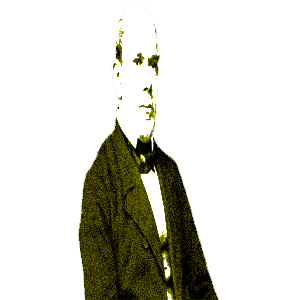
Adolf Anderssen
He studied chess intensely in his early years. He claimed that he developed much of his chess philosophy from the Labourdonnais - McDonnell series in the 1830s. He played exciting chess, on a par in creativity with someone like Richard Reti. He was widely recognized as the world's leading player from 1851-66 with a brief interruption from Paul Morphy.
His finest hour arrived in the famous London Tournament of 1851. This is recognized as the first major tournament of the Modern Era. Anderssen triumphed in a knockout tournament boasting the 16 best players in the world. He was then recognized as the world's leading player.
Young Adolf

Young Adolf Anderssen
As Anderssen reached adulthood he worked as a professor of mathematics in a local college, this was his bread and butter. Although he loved chess it was only ever considered a pastime or a hobby, certainly not a profession. It never interfered with Anderssen's working life. This was typical of the times.
Anderssen's progress as a chess player was somewhat in keeping with his personality, slow and steady, methodical. Even well into his 20s he still was not the best player even in Germany but his progression was as sure and true as it was gradual. Eventually he could play against and beat anyone.
Anderssen's Problems

Adolf Anderssen published many chess problems
He said the main goal in a problem should not be that it is a real position taken from a game. He declared that it was far more pressing that people learn something valuable about chess tactics or strategy when they are working out the solution.
Anderssen published Aufgabe fur Schachspieler in 1842. Later he was discovered by the Berlin Pleiades group which contained many of the biggest names around and Anderssen's chess adventure moved to a new level.
Immortal and Evergreen Games
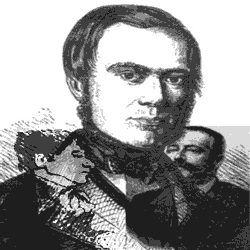
Adolf Anderssen defeated Kieseritzky and Dufrense in the infamous Immortal and Evergreen games
He was a good if not phenomenal positional player. Positional strategy would not come to the fore until the emergence of Steinitz. It was his unbelievable tactical combinations containing remarkable sacrifices that he is still remembered for.
Two of these games stand out in particular. The Immortal Game, played 21 June 1851 vs Lionel Kieseritzky in London and The Evergreen Game, played some time in 1852 vs Jean Dufrense in Berlin. These two games still bewilder chess lovers today.
London 1851
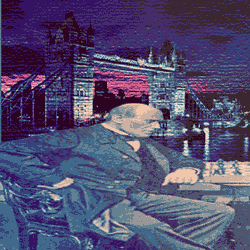
Adolf Anderssen wins London 1851
These competitions were becoming more common-place now, round robin leagues with a number of players. The old one-on-one, head-to-head matches with a set number of games were less frequent.
The biggest one yet was to take place in London with the strongest field imaginable. Anderssen was by now respected but was not expected to win the tournament.
It was a knock-out competition with 16 players and he won it out with consummate ease. Lionel Kieseritzky, Jozsef Szen and Howard Staunton all fell to the might of Adolf Anderssen. Marmaduke Wyvill was defeated in the final and Anderssen was King.
Morphy
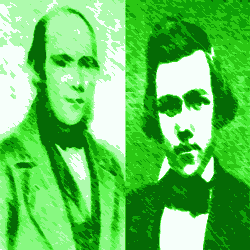
Paul Morphy blitzed Adolf Anderssen in 1858
He first terrorized the English chess scene, brushing aside all challengers there. Howard Staunton didn't even want to play him. He then turned up at the Café de la Régence in Paris with the intention of beating the top players in Europe. This player was none other than Paul Morphy. Morphy proceeded to send Lowenthal and Harrwitz packing.
He now had Europe's attention. He sent the stakes from the Harrwitz encounter on to Adolf Anderssen. The German made the trip to Paris to face the challenger. Morphy was quite ill when the match was to take place and Anderssen suggested they postpone until he had recovered. But Morphy was determined to play and though barely fit to stand won convincingly.
London 1862

Adolf Anderssen regains poll position in London in 1862
This time the competition was decided on a league basis between 14 players, each playing one game against the other 13. This system really suited Anderssen as he was a little vulnerable in a match situation against top rivals.
But as time would prove he was good at picking up points against the slightly weaker masters under the new system. Anderssen dropped only one point to finish two clear of his nearest challenger Louis Paulsen. He was top dog once more.
Steinitz

Steinitz beat Anderssen 8-6 in London in 1866
From this point on Steinitz was regarded as the world's leading player. But this was not the end of Adolf Anderssen as a force in the game. He went on to have great success in the tournament leagues that were becoming more and more common.
He would win more than half of the competitions he entered in his later years plus some second and third place finishes. All of this against top quality opposition. He continued to play right up to the last couple of years of his life.
Baden-Baden

Adolf Anderssen wins Baden Baden '70
Even though Anderssen was not strong enough to beat Steinitz in a match one-on-one, he could come out on top in these events as he only had to play one or two games against the Bohemian genius. He topped the table in this one too.
He stuck mainly to these types of round-robin tournaments as the top two or three players could now beat him in a match. Like Steinitz, Paulsen overtook Anderssen. Zukertort who earlier could not beat Anderssen eventually overcame him also.
Baden-Baden 1870 Final Table
| 1 | Anderssen,Adolf |
| 1-1 | 0-0 | 1-.5 | 1-1 | 1-.5 | 1-0 | 1-0 | 1-1 | 11.0 / 16 | |
| 2 | Steinitz,William | 0-0 |
| 1-1 | 0-.5 | 1-1 | 1-1 | 1-1 | .5-1 | .5-0 | 10.5 / 16 | |
| 3 | Neumann,Gustav Richard | 1-1 | 0-0 |
| 1-.5 | 0-1 | 0-1 | 1-1 | 0-.5 | 1-1 | 10.0 / 16 | |
| 4 | Blackburne,Joseph Henry | 0-.5 | 1-.5 | 0-.5 |
| 1-0 | 1-1 | 1-.5 | .5-.5 | 1-1 | 10.0 / 16 | |
| 5 | Paulsen,Louis | 0-0 | 0-0 | 1-0 | 0-1 |
| 1-0 | 1-.5 | 1-.5 | .5-1 | 7.5 / 16 | |
| 6 | de Vere,Cecil Valentine | 0-.5 | 0-0 | 1-0 | 0-0 | 0-1 |
| 0-1 | 1-1 | 0-1 | 6.5 / 16 | |
| 7 | Winawer,Szymon | 0-1 | 0-0 | 0-0 | 0-.5 | 0-.5 | 1-0 |
| 1-.5 | 1-1 | 6.5 / 16 | |
| 8 | Rosenthal,Samuel | 0-1 | .5-0 | 1-.5 | .5-.5 | 0-.5 | 0-0 | 0-.5 |
| 0-0 | 5.0 / 16 | |
| 9 | Minckwitz,Johannes | 0-0 | .5-1 | 0-0 | 0-0 | .5-0 | 1-0 | 0-0 | 1-1 |
| 5.0 / 16 |
Style and Legacy

Anderssen had a style of constructing brilliant and beautiful attacks, his legacy is that imaginative play brings tears to a glass eye
For a player of his time Anderssen's positional understanding was probably as good as that of anyone else. The reason for the magnitude of his success undoubtedly lay in his natural creativity and his unique understanding of how to bring his pieces together, making music as they cast the mating net.
From an attacking point of view he was probably as good as anyone. But the new generation of positional players, led by Steinitz, would prove his undoing. They neutralized his game by the use of these new ideas. But regardless, nothing can take away from the brilliance of Adolf Anderssen.
Private Life
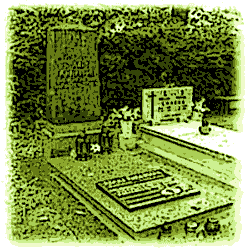
Adolf Anderssen was laid to rest in his home town
He completed his education in his home town and took a job in a local college teaching mathematics. He lived reasonably comfortably.
Anderssen played chess until about a year before his death when his health deteriorated somewhat. He died on March 13, 1879 aged 59.
Moving On
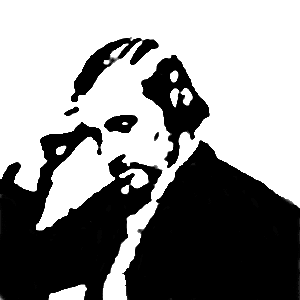
Daniel Harrwitz
He would have come across all sorts of characters, facing all the main players of his time. He would have seen the cream of the crop during his career spanning some 40 years.
There was one contemporary of his that he would have been very much aware of. A man from the same city and a similar age. He moved to Paris and began to play regularly at the Café de la Régence, establishing a formidable reputation there. That man's name was Daniel Harrwitz.






